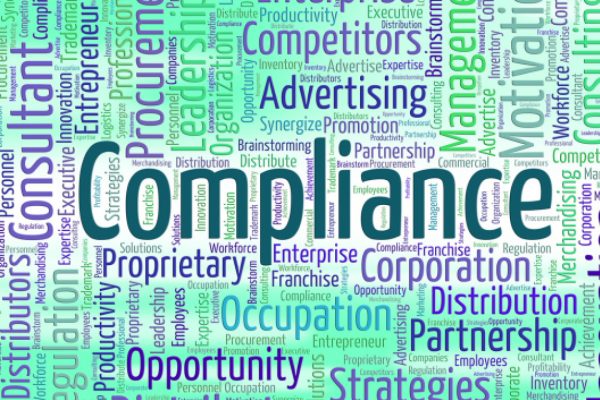During the process of constructing your business plan (especially if it’s your first time creating one), take the time to step back and remember the goal for this document: to articulate your business strategy and operations, and to guide your investors, partners, and employees through these objectives. For investors and partners, the compliance section of your business plan is one they will be paying close attention to. Why? Because it will spell out any areas of risk in your business. No matter what kind of product or service you provide, you’ll want to ensure that your business follows the necessary rules and regulations to operate safely and securely, so detailing the compliance section of your business plan is essential (even if not the most compelling to put together).

Legal and Regulatory Considerations for Compliance
Whether operating as a sole trader, a partnership or a company, you’ll first list out the legal and regulatory steps you’ve undertaken.
These will include applying for an ABN, registering your business name, GST and PAYG withholding for a sole trader. A partnership will tick many of the same boxes, while a company will need to ensure they apply for an Australian Company Number (ACN).
You’ll find extensive details online about the legal and regulatory considerations relevant to your business structure. Still, as a start, you’ll be referencing all of the documentation that formalises your business. For any business, ensuring that you have trademarked your business name and brand is an important step to ensure you aren’t going to be contacted later by a company already operating under the same or a very similar title.
This section can be as simple as a bullet-point list or as detailed as you feel required (for investor viewing, you might like to add in all key documents for further reading).
If your business fails to comply with industry and national standards and practices, you could be at risk of fines or even further investigation, so get familiar with what you need to have in place. The Australian Business License and Information Service online is a great location to source the specific information you’ll need.
Insurance
Comprehensive business insurance is essential and completely customisable depending on what field you operate in. Here, you’ll lay out the insurance arrangements you’ve put in place and highlight for your reader how this will reduce the potential risks of your operation – here; you can also include formal attachments and documentation (or link through to them in your business plan appendix as preferred).
The primary forms of insurance you’ll come across will include:
Public Liability Insurance
You’d need this if a customer or supplier were to lodge a claim against you for an injury that was caused by their interaction with your business. For example, if your store had an unsigned puddle of water on the floor and a customer slipped and injured themself, public liability insurance would come into play.
Product Liability Insurance
This provides you with financial protection from claims regarding personal injury or property damage caused by your product – and this is often included as part of many public liability policies.
Business Interruption Insurance
If your business property were damaged due to flooding, this insurance would cover the costs to keep your business running. This protected cash flow would allow you to keep paying staff wages, covering the loss of the sales while you recover. As recently as November 2020, the NSW Court of Appeal rejected the insurance industry’s argument that their business interruption policies would not cover COVID-related claims but now will have to review each of these recent claims coming through from Australian businesses.
Motor Vehicle Insurance
For any vehicles in your business fleet used for company purposes, this is essential. This would include common business vehicles like trucks, utes, or even specialised equipment like forklifts for many businesses.
As your business grows, there will be more focus on your compliance strategy and ongoing updates to ensure you remain compliant. The early phases of your business are the time to get it right and set the correct practices in place. You can even seek out third-party compliance firms to assess and assist in this area with ongoing compliance monitoring.
You’re about to reach the final section of your business plan, and next time we will complete your document with a look at your business assets.


